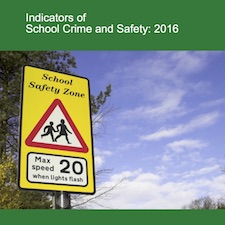 Clearly, schools where students feel safe, are not bullied, and are not subjected daily to intimidation, violence, and drugs are schools that will be more conducive to learning and preparing students for college. The National Center for Educational Statistics and the Bureau of Justice Statistics recently released the report, Indicators of School Crime and Safety: 2016, that offers data which shows differences in the K-12 school environments encountered by Black and White students.
Clearly, schools where students feel safe, are not bullied, and are not subjected daily to intimidation, violence, and drugs are schools that will be more conducive to learning and preparing students for college. The National Center for Educational Statistics and the Bureau of Justice Statistics recently released the report, Indicators of School Crime and Safety: 2016, that offers data which shows differences in the K-12 school environments encountered by Black and White students.
Here are some examples of the statistics included in the report.
- Percentage of White high school students who said they were threatened or injured by a weapon at school in 2015: 4.9%
- Percentage of Black high school students who said they were threatened or injured by a weapon at school in 2013: 7.9%
- Percentage of White students ages 12 to 18 who reported there were gangs in their school in 2015: 7.4%
- Percentage of Black students ages 12 to 18 who reported there were gangs in their school in 2015: 17.1%
- Percentage of White high school students who reported that drugs were available at their school in 2015: 19.8%
- Percentage of Black high school students who reported that drugs were available at their school in 2015: 20.6%
- Percentage of White students ages 12 to 18 who reported they were subjected to race-related hate speech at school in 2015: 1.7%
- Percentage of Black students ages 12 to 18 who reported they were subjected to race-related hate speech at school in 2015: 5.5%
- Percentage of White high school students who said they had been involved in a physical fight at school in 2015: 5.6%
- Percentage of Black high school students who said they had been involved in a physical fight at school in 2015: 12.6%
- Percentage of White students ages 12 to 18 who said they had access to a loaded gun in 2015: 5.2%
- Percentage of Black students ages 12 to 18 who said they had access to a loaded gun in 2015: 3.3%
- Percentage of White students ages 12 to 18 who said they were afraid of being attacked at school in 2015: 2.8%
- Percentage of Black students ages 12 to 18 who said they were afraid of being attacked at school: 3.4%
- Percentage of all White students ages 12 to 18 who reported being cyber-bullied in 2013: 7.6%
- Percentage of all Black students ages 12 to 18 who reported being cyber-bullied in 2013: 4.5%
- Percentage of White students who reported they were bullied due to their race in 2015: 4.7%
- Percentage of Black students who reported they were bullied due to their race in 2015: 15.5%
The full report, Indicators of School Crime and Safety: 2016, may be downloaded here.











